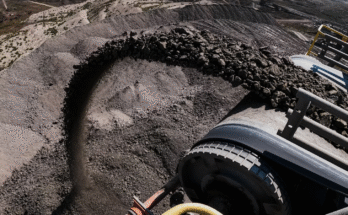Could a sway to the left in South America be the start of a new Latin step? Alexander Kozul-Wright looks at the partners.
Political change in Latin America’s recent history often resembles waves, as the peak of shifting ideology in one country is followed by a trough in another. The region’s recent swing to the left may not have the same momentum as the “pink tide” that flowed across the continent in the early 2000s (and ebbed out during a conservative backlash in the mid-2010s). But it still represents a region-wide political realignment.
Last month, Colombia elected a left-wing president for the first time. It joins Mexico, Argentina, Bolivia, Peru and Chile in a growing leftist bloc. In Brazil, former president (and left-wing icon) Luis Inacio Lula da Silva is odds on to win next month’s election. Although some left-wing leaders are more socially conservative than others, the latest sweep of elections is a clear indication of shared frustrations in the region.
Piqued by the impact of Covid-19 and the more recent cost of living crisis, angry voters across the continent have turned to political parties that favour enhanced welfare programmes and interventionist governments. The redrawing of political fault lines will have far-reaching consequences on everything from the environment to metals exports, and even monetary policy.
Angry voters across the continent have turned to political parties that favour enhanced welfare programmes and interventionist governments.
In recent months, however, the new pink tide has suffered numerous set-backs. Peru’s president, Pedro Castillo, is struggling to fight off repeated impeachment attempts. In early September, Chileans voted to reject a progressive amendment to an element of the country’s constitution which dates back to the Pinochet era. Days earlier, Argentina’s vice president, Cristina Fernandez de Kirchner, narrowly avoided an assassination attempt amid a deep economic crisis.
The old pink tide produced radical leaders like Hugo Chavez in Venezuela, Raphael Correa in Ecuador and Evo Morales in Bolivia. Their presidencies coincided with a long rally in commodity prices, which fuelled growth in social spending. Between 2002 and 2012, poverty in the region dropped from 44% to 28%, according to the UN. Today’s leaders would no doubt welcome a similar legacy, but they are more constrained and conciliatory than their predecessors.
This is largely due to factors beyond their borders. The old guard could afford to turn their back on orthodox economic policies. At the start of the century, China’s roaring factories fuelled demand for commodities, lining the state-coffers of resource-rich countries across Latin America. Low interest rates in the US, meanwhile, propelled risk-taking investors towards the continent. Today, monetary policy is tight. Fiscal space is also limited, as Covid-19 hit Latin America particularly hard.
Political tensions are high and cash is running thin. As such, the new left is on a shorter leash than its predecessors. Related to this, the original pink tide was less green than its successor. Today’s leaders are facing growing domestic pressure to decouple economic growth from natural resource exploitation. Environmental commitments will require difficult trade-offs that Chavez and Morales never had to confront.
Political tensions are high and cash is running thin.
In spite of these differences, a Lula victory in Brazil would add momentum to the new left wave that started with Andrés Manuel López Obrador’s victory in Mexico in 2018. On the home front, Lula will have to walk a fine line between mobilising progressives in urban centres without antagonising social conservatives in the hinterlands. Assuming he succeeds, it wouldn’t be long before he launches a charm offensive in the region.
In his recent party manifesto, Lula backed the idea of a continental monetary union. Besides deepening economic integration by expanding trade, he claims it would limit Latin America’s dependence on the US dollar. Elsewhere, he has spoken to officials from Chile and Argentina about establishing an OPEC-style alliance for lithium – a key component in the development of batteries for electric cars.
Away from economic policy, Lula has promised to work with Colombia’s new president to boost biodiversity protection in the Amazon. On environmental issues more generally, he’s seen as a practical deal maker and an experienced statesman. In short, Lula is a political colossus, capable of rallying geopolitical alliances. Inter-regional cooperation – on any number of issues from climate change to trade – would receive a shot in the arm were he re-elected.
Lula is a political colossus, capable of rallying geopolitical alliances.
In contrast to the halcyon years of the original pink tide, today’s global backdrop is a turbulent one. The price of Latin America’s key commodities are all expected to fall as the world economy slides towards recession. But assuming Lula is peacefully re-elected, Latin America could become more politically aligned (in spite of any attempts by the US to exert its influence). The upshot is that it may be premature to write off the new pink tide just yet.



